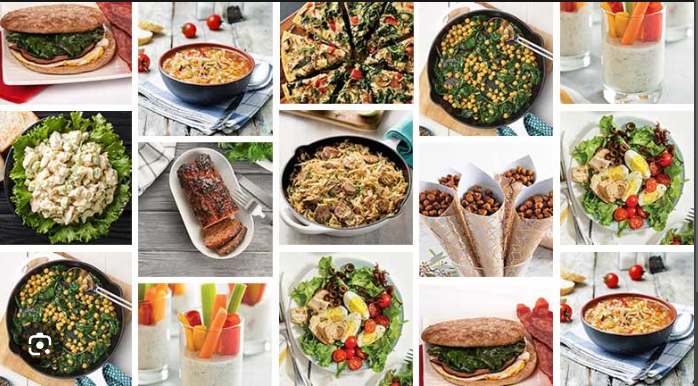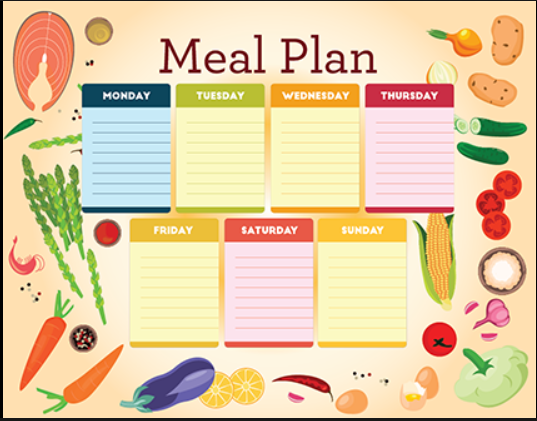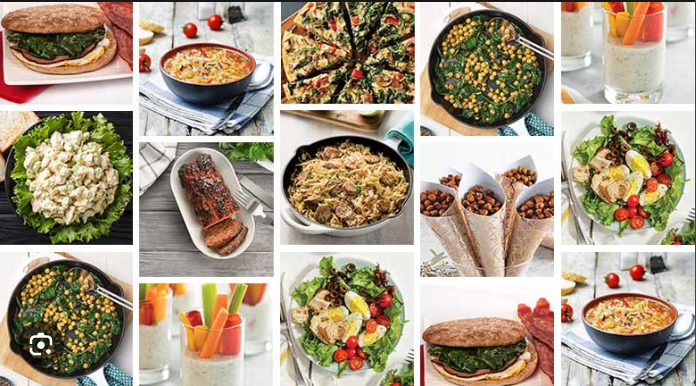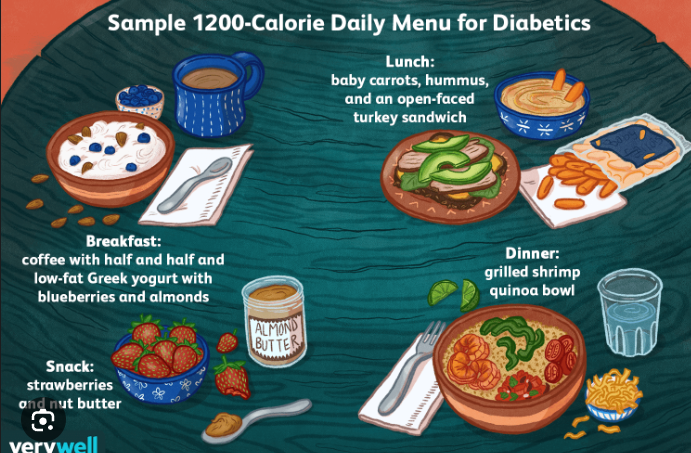This article includes advice and a meal plan for the best diets for diabetes.
When I ask my patients about the most challenging part of managing diabetes, 99% of the time the response is related to healthy eating: “What can I eat? What should I eat? How many grams of sugar should I aim for? Should I avoid or limit carbs?” they ask.
Guidelines for Meal Planning for Diabetics

Also read- Soft Foods And Recipes Safe For Post Dental Surgery
Our health is directly impacted by what we eat, particularly for those of us who have been given a diabetes diagnosis. In addition to promoting our general health, carbohydrates, protein, and lipids all help control blood sugar levels.
Maintaining a healthy dietary routine is essential for managing diabetes. But which diet is the “best” option for someone with diabetes out of the several options?
There is no ideal balance of calories from carbs, protein, and fat, according to the current American Diabetes Association Standards of Medical Care, a manual of best practices for managing diabetes. The Standards of Care acknowledge that there is no one size fits all when it comes to food plans for diabetics.
Finding the right eating plan for diabetes

We want to find a diet that we can follow consistently. According to research, switching between different meal patterns frequently can make it difficult to control blood sugar levels and make it tougher to lose weight. The blood sugar prefers consistency. Therefore, it might be disastrous for blood sugar control if you go on one “diet” for a week and then switch to another “diet” a month later. Diabetes sufferers should steer clear of two problems: yo-yoing weight and roller-coaster blood sugar levels.
All diabetics should be able to attain target blood sugar levels with the support of their diet, which should also help them lower their A1C and improve their blood pressure, cholesterol, and triglycerides. Additionally, we want the plan to allow for enjoyable dining by including some of our favorite and ethnic cuisine preferences. Any eating plan must be sustainable in order for us to adhere to it for an extended period of time without feeling as though we are depriving ourselves of the enjoyment of food.
7 tips as part of a healthy eating plan for diabetes:

- Choose foods high in fiber. Fiber is the part of a carbohydrate that cannot be digested. Choose fiber-rich foods to help prevent blood sugar spikes. Fruits, vegetables, whole grains, beans, lentils, nuts, seeds, and nut butter are examples of plant-based foods that include fiber.
- Lean protein should be a part of every meal. Lean protein at every meal will help you feel fuller for longer by slowing down the digestion of the meal, including the consumed carbohydrates.
- Apply the plate approach. Put half of your dish in non-starchy veggies, one-fourth in lean protein, and one-fourth in carbohydrates. The plate technique is an easy, visible way to make sure you consume enough lean protein and non-starchy vegetables while keeping your intake of high-carb meals to a minimum. Low-carb vegetables include leafy greens, broccoli, cauliflower, and green beans. Whole grains and yogurt are examples of healthy carbohydrates.
- The grain should be whole. Pick whole grains like quinoa, wild rice, oatmeal, and whole grain pasta that are higher in fiber than processed grains.
- Opt for whole foods rather than overly processed ones. Fresh, frozen, or canned produce are a few examples of whole foods. If you need to limit your sodium intake, be sure canned veggies have no added salt and that canned fruit is labeled as having its own juice.
- Distribute your daily intake of carbohydrates evenly. Pay attention to the overall number of grams of carbohydrates on a product label. The grams of sugar are added to the grams of carbohydrates in total. Spread out your carbohydrate-containing foods throughout the day. Depending on their individual demands, each person will receive a different amount of their daily carbohydrate allowance. To learn how many carbs to eat with meals, consult a qualified dietitian and diabetes educator. Typically, 30 to 45 grams of carbohydrates per meal are advised.
- Make sure you eat frequent, wholesome meals and snacks. Regular mealtimes and snacking can help keep your blood sugar levels stable. Low blood sugar levels might result from missing meals. A high blood sugar rise can result from bingeing later to make up for a missed meal.
7-Day Diabetes Meal Plan

Here is a sample healthy menu for people with diabetes, calculated with 45 grams of carbohydrate per meal. Note that healthy carbohydrates are spread evenly throughout the day.
For recipes for many of the meals below, check out “Diabetes Meal Planning and Nutrition for Dummies,” which I co-authored with Dr. Alan Rubin in 2013 with help from Lindsey Singleton, a registered dietitian nutritionist.
Monday
- Breakfast: egg white omelet with bell pepper, tomatoes, and spinach; two slices of rye toast with margarine; 1 cup cubed cantaloupe; coffee or tea.
- Lunch: Tuna salad on a slice of sourdough bread with sliced tomato and romaine; 3 cups popped popcorn; 3/4 cup blueberries; iced tea.
- Snack: cheese stick and five whole-wheat crackers.
- Dinner: chicken with lemon; 3/4 cup rice pilaf with currants; steamed green beans with roasted red bell pepper; whole-grain roll with margarine; iced tea.
Tuesday
- Breakfast: One 6-ounce serving of plain Greek yogurt topped with sliced almonds, cinnamon, and 1/2 cup raspberries; 1 cup cooked oatmeal; coffee or tea.
- Lunch: Four slices of fresh turkey on two slices of rye bread with 1 tablespoon ajvar (a red pepper spread); fresh orange sections; baby sweet bell peppers; water with sliced lime.
- Snack: a small apple with almonds.
- Dinner: One 5-ounce serving of teriyaki salmon with ginger and orange juice; 1 cup spaghetti squash with margarine; roasted asparagus; one whole-grain dinner roll with 1 teaspoon margarine; one sliced kiwi; flavored sparkling water.
Wednesday
- Breakfast: black bean breakfast bowl topped with sliced avocado; sliced fresh peach; coffee or tea.
- Lunch: Natural peanut butter spread on two slices of whole-wheat bread; 1/2 cup raspberries with a dollop of whipped cream; celery sticks; one serving of dark (72% cacao) chocolate.
- Snack: Cubed cheese and 17 frozen grapes (tastes like ice cream!).
- Dinner: Grilled chicken; 1 cup baked acorn squash; roasted cauliflower; dinner roll with margarine; a scoop of ice cream with chopped nuts.
Thursday
- Breakfast: One 6-ounce serving of low-fat, fruited yogurt; two servings of “cheese Danish” made with 1/4 cup cottage cheese sprinkled with cinnamon and low-calorie sweetener on a slice of pumpernickel bread; almonds; coffee or tea.
- Lunch: egg salad with sliced tomato on two slices of rye bread; fresh baby bell peppers; 1 cup vegetable soup; water with a lemon slice.
- Snack: 1 1/2 graham crackers with peanuts.
- Dinner: spiced pork tenderloin with gala apples; medium sweet potato with margarine; cornbread; sauteed spinach and roasted garlic; water.
Friday
- Breakfast: whole English muffin topped with two egg whites and a slice of cheese; sliced tomato; baked pear; coffee or tea.
- Lunch: Hamburger on a bun with lettuce and tomato; 1 cup baked fries; tossed salad with dressing; iced tea.
- Snack: Three-quarters cup fresh pineapple with almonds.
- Dinner: flatbread cheese and vegetable pizza; tossed salad loaded with vegetables and topped with salad dressing; flavored sparkling water.
Saturday
- Breakfast: a whole-grain tortilla spread with peanut butter and wrapped around a small banana; 1 cup milk; coffee or tea.
- Lunch: vegetarian chili; creamy coleslaw; 1/2 cup applesauce; sparkling lemon water.
- Snack: pistachios and an orange.
- Dinner: Panko chicken tenders; roasted Brussels sprouts; 3/4 cup quinoa salad; 1/2 cup cantaloupe; sparkling water.
Sunday
- Breakfast: A half-cup of cooked oatmeal; one whole sliced mango; soy sausage; tea or coffee.
- Lunch: Chipotle beef tacos; tossed salad with jicama and salad dressing; sliced apple; iced tea.
- Snack: Tuna salad with crackers.
- Dinner: baked polenta with turkey sausage ragu; steamed broccoli with margarine; flavored sparkling water.
Foods to Avoid or Limit on a Diet for Diabetes

I always answer, “A balance of everything,” when my patients ask me what they should and shouldn’t eat down to the mouthful. And yes, that includes sugar-containing foods like fruit, starchy vegetables, beans, whole grains, yogurt, milk, and even some sweets.
A certain type of food should be avoided or consumed in moderation because it can raise blood sugar levels. These are the foods that contain simple sugars, and they consist of:
- Table sugar.
- Coconut sugar.
- Agave.
- Honey.
- Jams and jellies
- Sweetened beverages like soda and fruit juice.
- Maple syrup.
Also read-Healthy High Fat Foods That You Should Consume
images source: Google




































